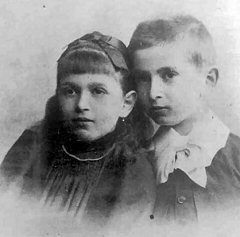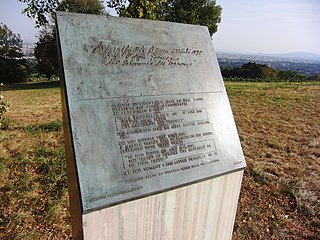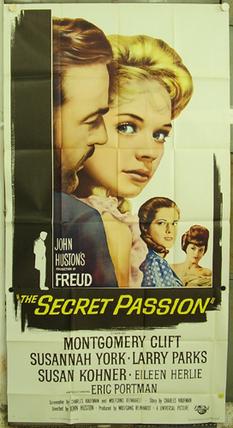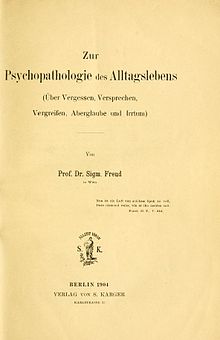
Emil Wilhelm Georg Magnus Kraepelin was a German psychiatrist. H. J. Eysenck's Encyclopedia of Psychology identifies him as the founder of modern scientific psychiatry, psychopharmacology and psychiatric genetics.
Psychoanalysis is a set of theories and therapeutic techniques that deal in part with the unconscious mind, and which together form a method of treatment for mental disorders. The discipline was established in the early 1890s by Sigmund Freud, whose work stemmed partly from the clinical work of Josef Breuer and others. Freud developed and refined the theory and practice of psychoanalysis until his death in 1939. In an encyclopedic article, he identified the cornerstones of psychoanalysis as "the assumption that there are unconscious mental processes, the recognition of the theory of repression and resistance, the appreciation of the importance of sexuality and of the Oedipus complex." Freud's colleagues Alfred Adler and Carl Gustav Jung developed offshoots of psychoanalysis which they called individual psychology (Adler) and analytical psychology (Jung), although Freud himself wrote a number of criticisms of them and emphatically denied that they were forms of psychoanalysis. Psychoanalysis was later developed in different directions by neo-Freudian thinkers, such as Erich Fromm, Karen Horney, and Harry Stack Sullivan.

Sigmund Freud was an Austrian neurologist and the founder of psychoanalysis, a clinical method for evaluating and treating pathologies seen as originating from conflicts in the psyche, through dialogue between patient and psychoanalyst, and the distinctive theory of mind and human agency derived from it.
In psychoanalytic theory, the id, ego and superego are three distinct, interacting agents in the psychic apparatus, defined in Sigmund Freud's structural model of the psyche. The three agents are theoretical constructs that Freud employed to describe the basic structure of mental life as it was encountered in psychoanalytic practice. Freud himself used the German terms das Es, Ich, and Über-Ich, which literally translate as "the it", "I", and "over-I". The Latin terms id, ego and superego were chosen by his original translators and have remained in use.

Alessandro di Mariano di Vanni Filipepi, better known as Sandro Botticelli or simply Botticelli, was an Italian painter of the Early Renaissance. Botticelli's posthumous reputation suffered until the late 19th century, when he was rediscovered by the Pre-Raphaelites who stimulated a reappraisal of his work. Since then, his paintings have been seen to represent the linear grace of late Italian Gothic and some Early Renaissance painting, even though they date from the latter half of the Italian Renaissance period.
In psychoanalysis, a Freudian slip, also called parapraxis, is an error in speech, memory, or physical action that occurs due to the interference of an unconscious subdued wish or internal train of thought. Classical examples involve slips of the tongue, but psychoanalytic theory also embraces misreadings, mishearings, mistypings, temporary forgettings, and the mislaying and losing of objects.

Luca Signorelli was an Italian Renaissance painter from Cortona, in Tuscany, who was noted in particular for his ability as a draftsman and his use of foreshortening. His massive frescos of the Last Judgment (1499–1503) in Orvieto Cathedral are considered his masterpiece.

Orvieto is a city and comune in the Province of Terni, southwestern Umbria, Italy, situated on the flat summit of a large butte of volcanic tuff. The city rises dramatically above the almost-vertical faces of tuff cliffs that are completed by defensive walls built of the same stone.

Paul Eugen Bleuler was a Swiss psychiatrist and humanist most notable for his contributions to the understanding of mental illness. He coined several psychiatric terms including "schizophrenia", "schizoid", "autism", depth psychology and what Sigmund Freud called "Bleuler's happily chosen term ambivalence".
Free association is the expression of the content of consciousness without censorship as an aid in gaining access to unconscious processes. The technique is used in psychoanalysis which was originally devised by Sigmund Freud out of the hypnotic method of his mentor and colleague, Josef Breuer.

Karl Abraham was an influential German psychoanalyst, and a collaborator of Sigmund Freud, who called him his 'best pupil'.

Sergei Konstantinovitch Pankejeff was a Russian aristocrat from Odesa, Russian Empire. Pankejeff is best known for being a patient of Sigmund Freud, who gave him the pseudonym of Wolf Man to protect his identity, after a dream Pankejeff had of a tree full of white wolves.

Beyond the Pleasure Principle is a 1920 essay by Sigmund Freud. It marks a major turning point in the formulation of his drive theory, where Freud had previously attributed self-preservation in human behavior to the drives of Eros and the regulation of libido, governed by the pleasure principle. Revising this as inconclusive, Freud theorized beyond the pleasure principle, newly considering the death drives which refers to the tendency towards destruction and annihilation, often expressed through behaviors such as aggression, repetition compulsion, and self-destructiveness.

Dora is the pseudonym given by Sigmund Freud to a patient whom he diagnosed with hysteria, and treated for about eleven weeks in 1900. Her most manifest hysterical symptom was aphonia, or loss of voice. The patient's real name was Ida Bauer (1882–1945); her brother Otto Bauer was a leading member of the Austro-Marxist movement.

"Irma's injection" is the name given to the dream that Sigmund Freud dreamt on the night of July 23, 1895, and that he subsequently analyzed to arrive at his theory that dreams are wish fulfillments. He described his ideas on dream theory and provided his analysis of the dream, alongside other dreams from case studies, in his book The Interpretation of Dreams.

Freud: The Secret Passion, or simply Freud, is a 1962 American biographical drama film directed by John Huston and produced by Wolfgang Reinhardt. Based on the life of Austrian neurologist Sigmund Freud, it stars Montgomery Clift as Freud and Susannah York as his patient Cecily Koertner. Other cast members include Larry Parks, Susan Kohner, Eileen Herlie, Eric Portman, and David McCallum. The screenplay was by Charles Kaufman and Reinhardt, with some elements from a script by Jean-Paul Sartre, who withdrew his name from the film.
Peter Joffre Swales was a Welsh "guerilla historian of psychoanalysis and former assistant to the Rolling Stones". He called himself "the punk historian of psychoanalysis", and he is well known for his essays on Sigmund Freud. A 1998 article in The New York Times Magazine noted his "remarkable detective work over the last 25 years, revealing the true identities of several early patients of Freud's who had been known only by their pseudonyms." He is one of three men whose machinations are described in Janet Malcolm's 1984 book In the Freud Archives, which originated as two articles in The New Yorker magazine that provoked Masson to file an unsuccessful $10 million libel suit against the magazine and Malcolm.

Psychopathology of Everyday Life is a 1901 work by Sigmund Freud, the founder of psychoanalysis. Based on Freud's researches into slips and parapraxes from 1897 onwards, it became perhaps the best-known of all Freud's writings.
Dream speech is internal speech in which errors occur during a dream. The term was coined by Emil Kraepelin in his 1906 monograph titled Über Sprachstörungen im Traume. The text discussed various forms of dream speech, outlining 286 examples. Dream speech is not to be confounded with the 'language of dreams', which refers to the visual means of representing thought in dreams.

Martha Bernays was the wife of Austrian psychoanalyst Sigmund Freud.













